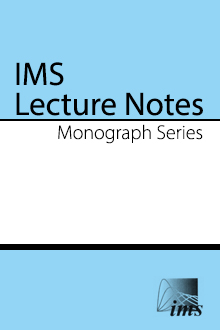Abstract
The intersection union test is a standard test in situations where the rejection of all elements of a set of $k$ hypotheses is required. In particular, the intersection union test is known to be uniformly most powerful within a certain class of monotone level$-\alpha$ tests. In this article we consider the special case of $k=2$. We consider the problem of deriving simultaneous confidence intervals which are compatible with the associated test decisions. We apply the general partitioning principle of Finner and Strassburger (2002) to derive a general method to construct confidence intervals which are compatible to a given test. Several examples of partitioning the two-dimensional parameter space are given and their characteristics are discussed in detail. The methods in this paper are illustrated by two gold standard clinical trials, where a new treatment under investigation is compared to both a placebo group and a standard therapy.
Information
Digital Object Identifier: 10.1214/lnms/1196285631


